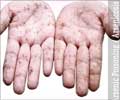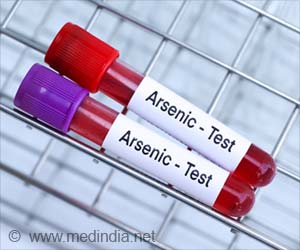Discover how arsenic exposure is linked to an increased risk of diabetes in males and the potential for miR-34a biomarker as a screening tool.
- Arsenic exposure from contaminated water can elevate the risk of diabetes
- Exposing humanized mice (using genes) to arsenic revealed heightened diabetes risk in males
- The biomarker miR-34a can be used as a screening tool for diabetes in arsenic-endemic regions
Molecular and Metabolic Analysis of Arsenic-Exposed Humanized AS3MT Mice
Go to source).
Arsenic-Contaminated Water's Link to Diabetes
Utilizing genetically modified lab mice carrying a human gene- iAs, the study revealed a significant contrast: male mice exposed to arsenic in their drinking water developed diabetes, whereas their female counterparts did not. The mice, engineered to express a human enzyme for arsenic metabolism, offered critical insights as normal mice process arsenic differently from humans, requiring exceedingly high doses to induce diabetes.Did You Know?
Arsenic is one of WHO’s 10 chemicals of major public health concern. Arsenic exposure affects millions of individuals worldwide, with levels far over the recommended level of 10 μg/L, which raises public health concern.
Gender-Specific Vulnerability: Insights on Arsenic's Role in Male Onset of Diabetes
During a month-long exposure to non-lethal doses of arsenic, the researchers closely examined liver and white adipose tissues implicated in diabetes. In the male humanized mice, there was notable up-regulation of genes associated with insulin resistance.Moreover, a key biomarker, miR-34a, linked strongly to insulin resistance in diabetes and other metabolic disorders, was identified in both the liver and white adipose tissues of these male mice.
The biomarker miR-34a can be used as a screening tool for individuals in arsenic-endemic regions indicating elevated levels as a potential risk factor for the onset of diabetes or other metabolic dysfunctions.
While the study's sample sizes were limited, they provided valuable insights, serving as a catalyst for further exploration and targeted research in this critical domain at the intersection of environmental toxins and metabolic health.
Reference:
- Molecular and Metabolic Analysis of Arsenic-Exposed Humanized AS3MT Mice - (https://ehp.niehs.nih.gov/doi/10.1289/EHP12785)
Source-Medindia
















